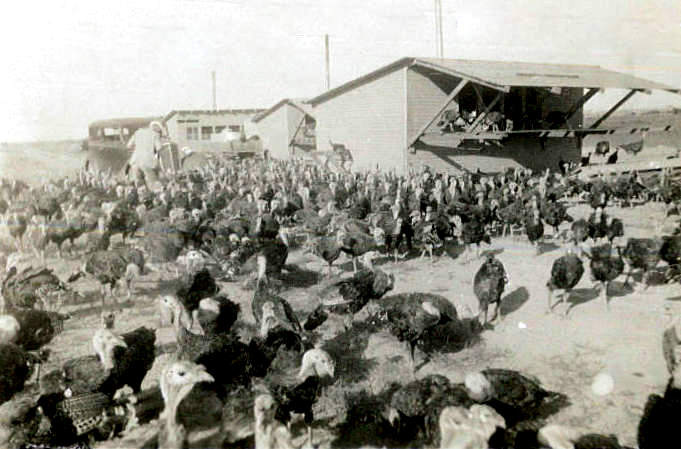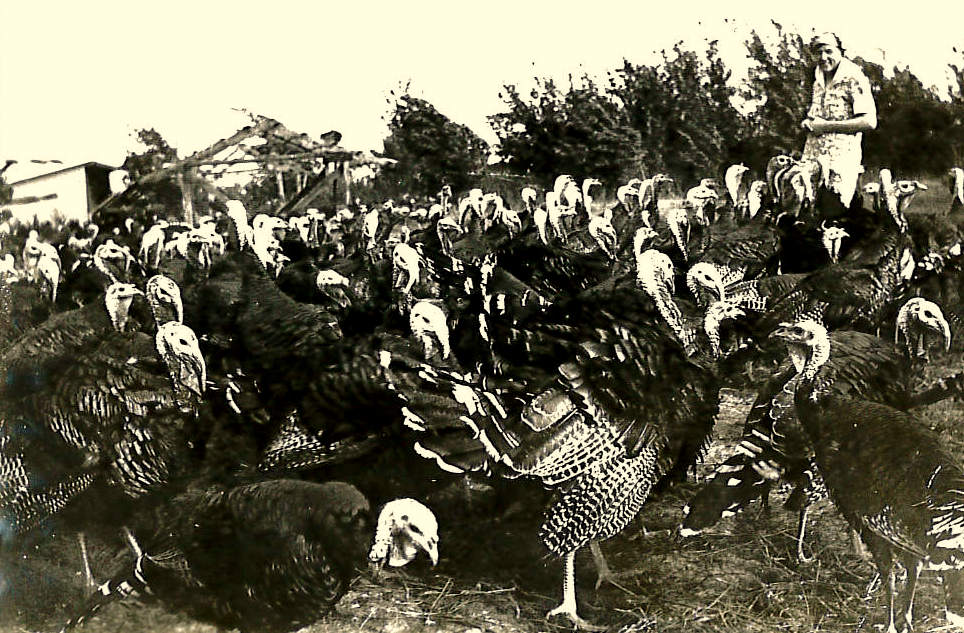 As if enduring the Dust Bowl Days and Great Depression were not enough, grasshoppers were an additional problem during the 1930s. To battle the pests and ultimately save his alfalfa crop, Orlie White began raising turkeys on his Kearny County farm located on the north shore of Lake McKinney. According to a story written by his wife, Prudence, “turkeys were the best grasshopper catchers in the world.”
As if enduring the Dust Bowl Days and Great Depression were not enough, grasshoppers were an additional problem during the 1930s. To battle the pests and ultimately save his alfalfa crop, Orlie White began raising turkeys on his Kearny County farm located on the north shore of Lake McKinney. According to a story written by his wife, Prudence, “turkeys were the best grasshopper catchers in the world.”
Orlie had a dealership with Red Wing Hatcheries in California for ‘broad-breasted turkeys,’ an improved meat bird. The turkeys would arrive by freight train, each one taught to drink water, and then put in heated brooder houses for the first few months. The first year White built three brooder houses for 1,000 poults. These brooder houses were on skids so they could be pulled by horse or tractor to fresh ground and a new supply of grasshoppers every two to three days. Later three more houses were added, and the number of poults increased to 2,100. In summer, portable roosts were built as turkeys “have a yen” to be put out in the open at night. To keep coyotes, coons and other predators at bay, lighted lanterns and sometimes even flares were put around the turkeys and someone slept near the turkeys each night.
The World War II draft resulted in a shortage of hired help, and White’s turkey business ended by 1942. It had been a profitable enterprise with White marketing his birds for the Thanksgiving and Christmas season at Swift’s plant in Garden City.

